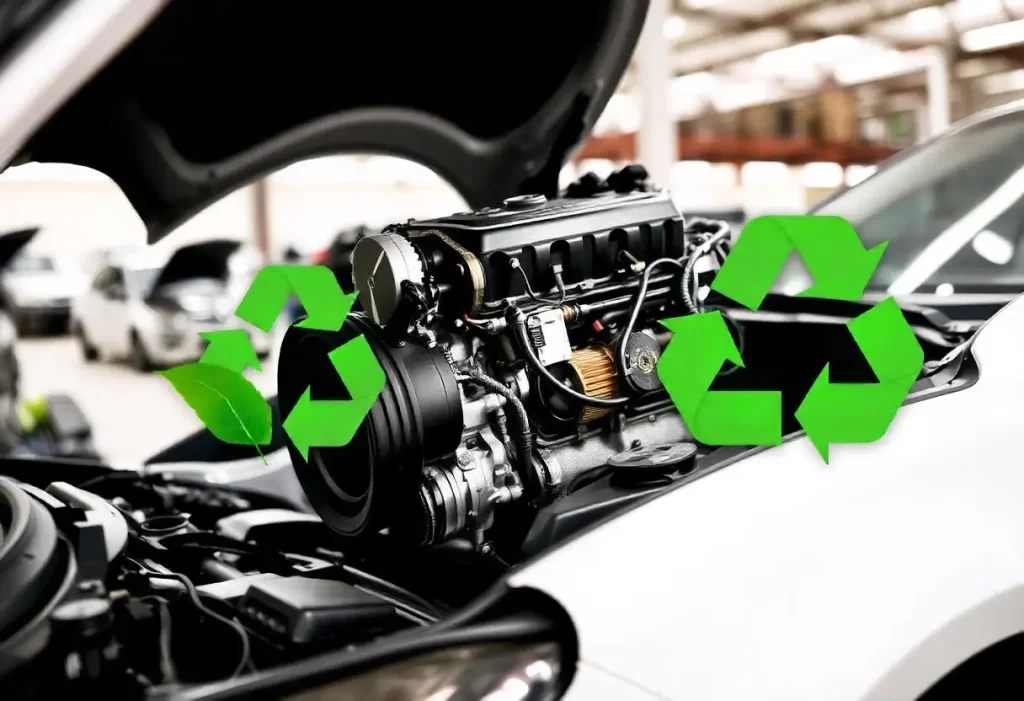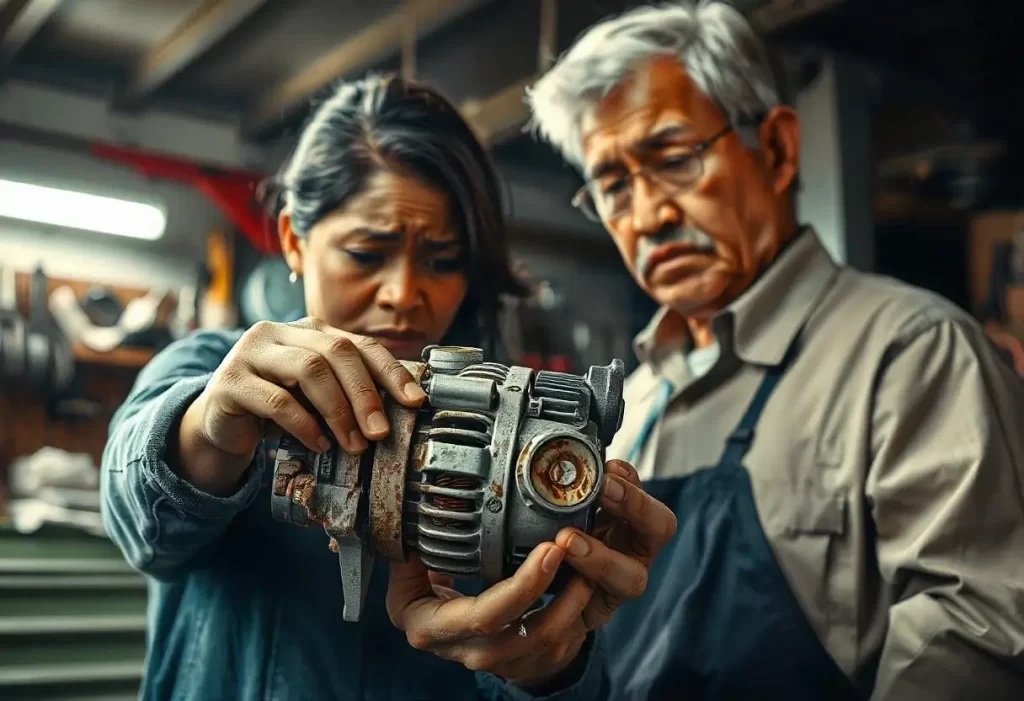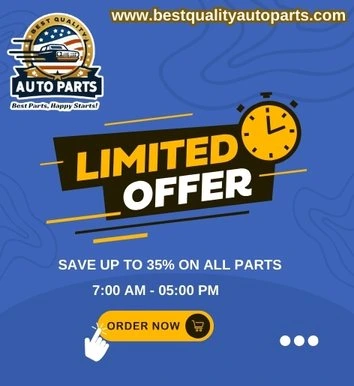Quick Product Inquiry !

What Are Used Auto Parts?
Used auto parts are exactly what the name suggests—parts that have been previously installed and used in another vehicle. They are typically sourced from vehicles that have been scrapped or damaged beyond repair. Salvage yards, auto recyclers, and specialized retailers stock these parts, which range from engines to alternators, transmissions, and even smaller components like mirrors or lights. This brings us to the topic of used auto parts vs. aftermarket parts.
Advantages of Used Auto Parts
- Cost Savings
One of the most significant benefits of choosing used auto parts is the cost savings. Since these parts are not new, they are sold at a fraction of the price of both OEM (Original Equipment Manufacturer) and aftermarket parts. For major components like transmissions or engines, buying used can save you hundreds or even thousands of dollars compared to aftermarket parts. - OEM Quality
When you buy used auto parts, you’re getting original manufacturer parts, which means they are made specifically for your vehicle model. OEM parts often offer better fit, quality, and durability compared to many aftermarket parts. Used OEM parts retain the reliability of the original part but come at a significantly lower price point when considering used auto parts vs. aftermarket parts. - Availability
For older models or vehicles that are no longer in production, finding new OEM parts can be a challenge. Used auto parts offer a lifeline in such cases, as salvage yards often have hard-to-find components that are no longer available through traditional retailers. This is another area where used auto parts vs. aftermarket parts can be critical for certain repairs. - Environmentally Friendly
Recycling used auto parts reduces waste and contributes to a more sustainable environment. Rather than scrapping an entire vehicle, functional parts can be reused, reducing the need for new resources to be extracted and manufactured. This environmental aspect is often overlooked in the used auto parts vs. aftermarket parts discussion.
Disadvantages of Used Auto Parts
- Unknown History
One of the drawbacks of purchasing used auto parts is the uncertainty regarding their history. A used part might have hidden wear and tear, making its lifespan difficult to predict. Some salvage yards or retailers offer warranties, but it’s still a gamble compared to buying new or aftermarket parts. This uncertainty is a key factor in the used auto parts vs. aftermarket parts debate. - Limited Warranty
Used auto parts often come with limited or no warranty, depending on where you purchase them. While some reputable sellers do offer short-term warranties, they are generally not as comprehensive as those provided with new or aftermarket parts. This lack of warranty can influence your decision in the used auto parts vs. aftermarket parts context. - Availability of Specific Parts
While used parts offer a solution for rare or discontinued parts, availability can be inconsistent. Some parts, especially high-demand ones like engines and transmissions, may be harder to find, or they may vary in condition. In the used auto parts vs. aftermarket parts arena, this inconsistency can be a significant drawback.

What Are Aftermarket Parts?
Aftermarket parts are parts that are made by manufacturers other than the OEM. These parts are designed to be compatible with various makes and models of vehicles but are not produced by the vehicle’s original manufacturer. Aftermarket parts are readily available through various online retailers, auto shops, and big-box stores.
Advantages of Aftermarket Parts
1. Affordability
Much like used parts, aftermarket parts are usually less expensive than OEM parts. These parts are typically mass-produced, driving the cost down. This makes them a popular choice for car owners looking to save money on repairs without sacrificing too much quality.
2. Wide Range of Choices
One of the most significant advantages of aftermarket parts is the vast selection available. You can find parts with enhanced features, improved performance, or even different aesthetics. This makes aftermarket parts a go-to for people interested in customizing their vehicles or upgrading performance.
3. New Condition
Unlike used parts, aftermarket parts are new. They come with the peace of mind that the part has never been installed or subjected to wear and tear. Many reputable aftermarket brands also offer warranties that rival or exceed OEM part warranties.
4. Performance Upgrades
Some aftermarket parts are specifically designed to improve the performance of your vehicle beyond its original specs. Whether you’re looking for better fuel efficiency, more horsepower, or enhanced braking, aftermarket options often outshine OEM and used parts in these categories.
Disadvantages of Aftermarket Parts
1. Variable Quality
One of the major concerns with aftermarket parts is quality inconsistency. While some manufacturers produce high-quality components that rival or even exceed OEM standards, others cut corners to reduce costs, resulting in subpar parts. This makes it crucial to do thorough research before buying aftermarket components.
2. Fit and Compatibility Issues
Aftermarket parts are not always an exact fit for every vehicle model. Since they are made by third-party manufacturers, they may not always fit as seamlessly as OEM parts. In some cases, this can lead to installation difficulties or even performance issues down the road.
3. Void Warranties
Some vehicle manufacturers have strict guidelines regarding the use of aftermarket parts. Installing non-OEM parts can sometimes void your vehicle’s warranty, leaving you without coverage for future repairs. Always check your warranty terms before opting for aftermarket components.
4. Lower Resale Value
While aftermarket parts can offer performance and aesthetic improvements, they can also lower a vehicle’s resale value. Potential buyers might be wary of a vehicle that has been heavily modified or repaired with non-OEM parts, fearing that it may not be as reliable as a vehicle equipped with original components.

When Should You Choose Used Parts?
Used auto parts are a great option for vehicle owners who:
- Are on a tight budget and need the lowest cost option available.
- Own older vehicles for which finding new parts is a challenge.
- Want OEM parts for a fraction of the price.
- Are environmentally conscious and prefer recycling and reusing resources.
Best Situations for Using Used Parts
- Classic Cars: When working on classic or discontinued vehicles, used parts may be the only viable option.
- Minor Repairs: For small, non-essential components like mirrors or door handles, used parts offer great value.
- OEM Requirements: If you need a part that perfectly fits your vehicle without modification, a used OEM part is often the best choice.
When Should You Choose Aftermarket Parts?
Aftermarket parts are ideal for:
- Those looking to upgrade vehicle performance or customize their vehicle.
- People who want a wide selection of choices and features.
- Vehicle owners looking for new, affordable parts with a warranty.
- Individuals who need a part that is readily available and in new condition.
Best Situations for Using Aftermarket Parts
- Performance Upgrades: Aftermarket parts are often superior when it comes to enhancing vehicle performance or style.
- Budget Replacements: If OEM parts are too expensive but you still want a new part, aftermarket is a solid middle-ground.
- Customization: For those who want to modify the appearance or functionality of their vehicle, aftermarket parts provide the freedom to do so.

Conclusion
Both used auto parts and aftermarket parts have their place in the automotive repair and upgrade world. Used parts offer significant cost savings, especially for older vehicles or for those who prioritize OEM quality. However, they come with risks such as unknown history and limited warranties.
On the other hand, aftermarket parts provide variety, newness, and the opportunity for customization, although they can sometimes lack the fit and reliability of OEM parts.
Ultimately, the right choice depends on your budget, vehicle type, and long-term plans. Whether you’re looking to restore a classic car with used parts or upgrade performance with aftermarket options, understanding the pros and cons of each will ensure you’re making the best decision for your vehicle
Article Discovery
Featured Reads
Quick Product Inquiry !
Frequently Asked Questions
How long does it usually take to receive my Engine or Transmission?
You can typically expect your order to arrive within 5-7 business days after it has been processed.
How will my Engine or Transmission be delivered?
We partner with leading LTL shipping companies such as R&L Carriers, XPO Logistics, and FedEx to ensure safe and timely delivery.
What forms of payment do you accept?
We accept all major debit and credit cards, as well as wire transfers, Zelle payments, and certified checks.
Is there a warranty on your used engines and transmissions?
Yes, we offer a warranty ranging from 90 days to 3 years, depending on the Part, starting from the date of delivery.
Can I return or exchange a used engine or transmission if it doesn’t fit my vehicle?
Absolutely! We have a Return and Refund Policy for incorrect, defective, or damaged items.
Can I track my order during shipping?
Yes, once your order is picked up by the shipping company, you will receive a tracking number to monitor its progress online.





